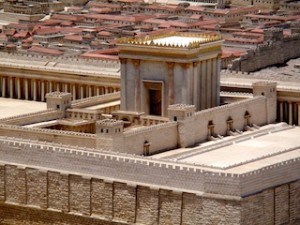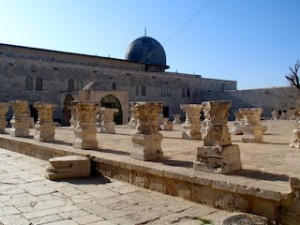A few weeks ago, visiting the Temple Mount in Jerusalem, I just wanted to cry. The place I consider the spiritual center of the universe is a 35-acre compound that today is holy to three faiths. It is also a flashpoint for unrest and controversy.
Dominating the eastern edge of Jerusalem’s Old City, sitting almost ominously over the Kidron Valley, the Temple Mount is the traditional site of Mount Moriah, the place where Abraham was prepared to sacrifice Isaac. It is the famous “threshing floor” purchased by David, and it is the place where his son, Solomon, built the first Jewish temple.
The Jews poignantly remember this day every year, which falls on the 9th of Av on their calendar. It was on this day that both Jewish temples were destroyed (first by the Babylonians and later by the Romans, 490 years apart). It is a day of fasting and is considered “the saddest day in Jewish history.”
In addition to the temple destruction, the Jews also remember the sin of the spies sent into Canaan by Moses; the savage destruction of the Holy City by the Romans in A.D. 70, and the final put-down of the Jewish rebellion (led by Bar Kokhba) in the second century.
Throughout history, the Jews have endured satanic hatred from various people and people groups, and for millennia, tears have flowed on this date.
I find it extraordinary that even today, in the modern Jewish state of Israel, the Jews still lament these events. In fact, a very moving Facebook post yesterday noted that people were sitting near the Western Wall (a retaining wall, the only thing left from the Roman destruction)—crying, singing, and asking God, “Where is out temple?”
There is of course a community of thought that says the Jews will one day rebuild the Temple, but with the Dome of the Rock dominating the landscape, politically as well, few can envision such a scenario. When members of Israel’s 66th Paratroop Brigade liberated the city in the Six Day War, many believed the Temple construction would commence immediately. Moshe Dayan, however, turned control of the Temple Mount back to the Arabs, wishing to avoid World War III. Many in Jerusalem and around the world still fervently believe for a rebuilt Temple.
I also visited Masada, the desolate, ruined summer palace of Herod, and the site of a ghastly scene of murder and suicide a couple years after Titus sacked Rome in A.D. 70 (an event predicted by Jesus; see Matthew 24). There, as the Romans were mounting a final attack, 1,000 Jewish men, women, and children chose suicide rather than life as Roman slaves.
Both sites were a reminder to me that while the Jews are reborn in their ancestral land—and event I consider so extraordinary that mere words fail—ancient hatreds still remain.
Yasser Arafat used to be fond of saying that no Jewish temples ever stood in Jerusalem. Grotesque excavations have taken place there in recent years (I saw the evidence everywhere, a stunning collection of piles of pillars, paving stones, and piles of dirt that no doubt contain precious artifacts from the Temple periods).
Only days ago, it was announced that artifacts had come to light after 2,000 years in a tunnel near the Temple Mount—a sword, oil lamps, pots and coins. The sword is assumed to have belonged to a Roman soldier garrisoned at the site. The historian Josephus described the destruction of Jerusalem, only 40 years after Jesus said it would be so; the savagery of the Romans is difficult to comprehend.
And so, even as we cloak ourselves in modernity and amazing technology, millions remember days from the past that are a blood-stain on humanity.
May the Lord of history bless the Jewish people immeasurably today, and dry their tears forever as we go forward to a destiny chosen by Him alone.


